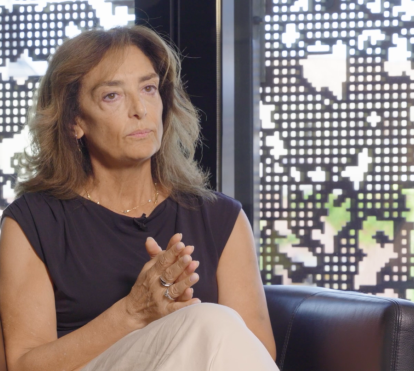
You are reading:

You are reading:

03.10.24
6 minutes readBetween 5% and 10% of the adult population suffers from diabetes, a chronic disease that, in the long term, can lead to complications that significantly reduce the quality of life of those affected. The ”la Caixa” Foundation, aware of the importance of allocating more resources to this disease, has joined forces with Breakthrough T1D (formerly JDRF), a U.S. non-profit organisation whose mission is to promote advances to treat, cure and prevent type 1 diabetes (T1D) and its complications.
Diabetes is a chronic metabolic disease characterised by high levels of glucose (sugar) in the blood. In type 1 diabetes, the body does not produce enough insulin – a hormone produced in the pancreas that helps glucose enter cells to be used for energy. In type 2 diabetes, the body does not use insulin properly. And in both cases, excess blood sugar can lead to long-term complications such as ulcers, vision problems, kidney damage, heart attacks and strokes and a weakened immune system, which reduces the quality of life of those affected.
We spoke to Esther Latres, Vice President of Research at Breakthrough T1D (formerly JDRF), about the importance of research in this area.
Diabetes is a very widespread disease. How many people are estimated to have diabetes in Spain, Europe and the world?
It’s important to differentiate between type 1 and type 2. Of the population affected by diabetes, between 5% and 8% have type 1. In Spain, there are about 209,000 people with T1D; in Europe, almost two million, and worldwide, between eight and nine million. In the last 20 years, its incidence has increased by around 35% and we don’t know why.
What are the differences between the two types of diabetes?

Both are metabolic diseases. When they develop clinically, it’s due to an increase in blood glucose levels, which can lead to common complications. In type 2 diabetes, these high sugar levels are caused by insulin resistance and usually occur in people who are overweight or obese, but not always. In type 1, what happens is that the beta cells of the pancreas produce little or no insulin, and this has a very different root cause: it’s an autoimmune disease. It starts with a dysregulation of the immune system that is transferred to the metabolism: the body mistakenly attacks the insulin-producing beta cells. It’s important to recognise this autoimmune component of T1D so that appropriate drugs can be developed.
What causes type 1 diabetes?
We know that there’s a genetic factor, but some people develop it without any family history. It can also arise from a virus or as a result of several prior infections. Often, type 1 diabetes is mistaken for type 2 because the diagnosis is complicated. Until recently, T1D was known as childhood diabetes, but it has been found to affect adults as well.
Are there early detection tools for type 1 diabetes?
Yes, there are diagnostic measures, and we believe it would be important to have a screening system to detect signs of autoimmunity in individuals. This can be done thanks to three types of antibodies that can be identified with a simple blood sample. Currently, the main beneficiaries of these tests are relatives of people who have the disease. In the general population, there is still a need to develop infrastructure and raise awareness of the importance of detecting the risk of type 1 diabetes. It’s true that genetic markers also exist, but in my opinion autoimmunity diagnostics are more effective, as they can be performed very easily.
What is the raison d’être of Breakthrough T1D?
The large pharmaceutical companies develop many more solutions for type 2 diabetes because the market is much bigger. The Breakthrough T1D Foundation (formerly JDRF) was set up by families with children who had type 1 diabetes. Since its inception, it has grown significantly, but the primary goal is still to improve the lives of people with this type of diabetes, including on a psychological level, because it’s difficult to live with a chronic disease that requires constant control of your glucose levels. Insulin treatment, in fact, was invented 100 years ago and is still the only treatment for type 1 diabetes.
At our foundation, we’ve focused heavily on improving techniques for measuring and maintaining blood glucose levels. There have been many advances in managing type 1 diabetes, but current therapies, which only rely on replacing insulin, are insufficient. Insulin saves lives, but is not a cure, nor does it reduce long-term complications. For that reason, we’re now focusing on curative approaches, on researching and developing preventive therapies like immunotherapies, which prevent the clinical development of the disease and insulin dependence.
There are also other therapies, based on the transplantation of pancreatic islets (which produce hormones like insulin), aimed at people with very severe complications who have been living with type 1 diabetes for years. Over the last 15 years, there has been intensive research into how to create these islets from stem cells, and clinical trials are showing very good results.

What is the purpose of Breakthrough T1D’s collaboration with the ”la Caixa” Foundation?
Breakthrough T1D collaborates with many academic institutions, policy makers and companies. In this case, we intend to expand research and provide support in Spain and Portugal, but we’re also interested in the vision that ”la Caixa” Foundation has of other research areas closely related to type 1 diabetes, such as cardiology, neurology or infectious diseases. These are areas where researchers could collaborate. We’re also very interested in the strategy and projection of the ”la Caixa” Foundation to help move forward projects that are in the research phase and eventually develop a therapy in the future.
This call aims to identify and support research initiatives of scientific excellence that can have a positive impact on society. Now in its eighth edition, the deadline for submitting projects is 20 November. The projects submitted must be related to neurosciences, oncology, cardiovascular and related metabolic diseases, infectious diseases and enabling technologies for these four thematic areas. Within these categories and as a new feature in this edition, projects focusing on rare paediatric diseases and type 1 diabetes will have the opportunity to receive specific funding within the framework of collaborations with the Sant Joan de Déu Research Foundation and the Breakthrough T1D Foundation, respectively.